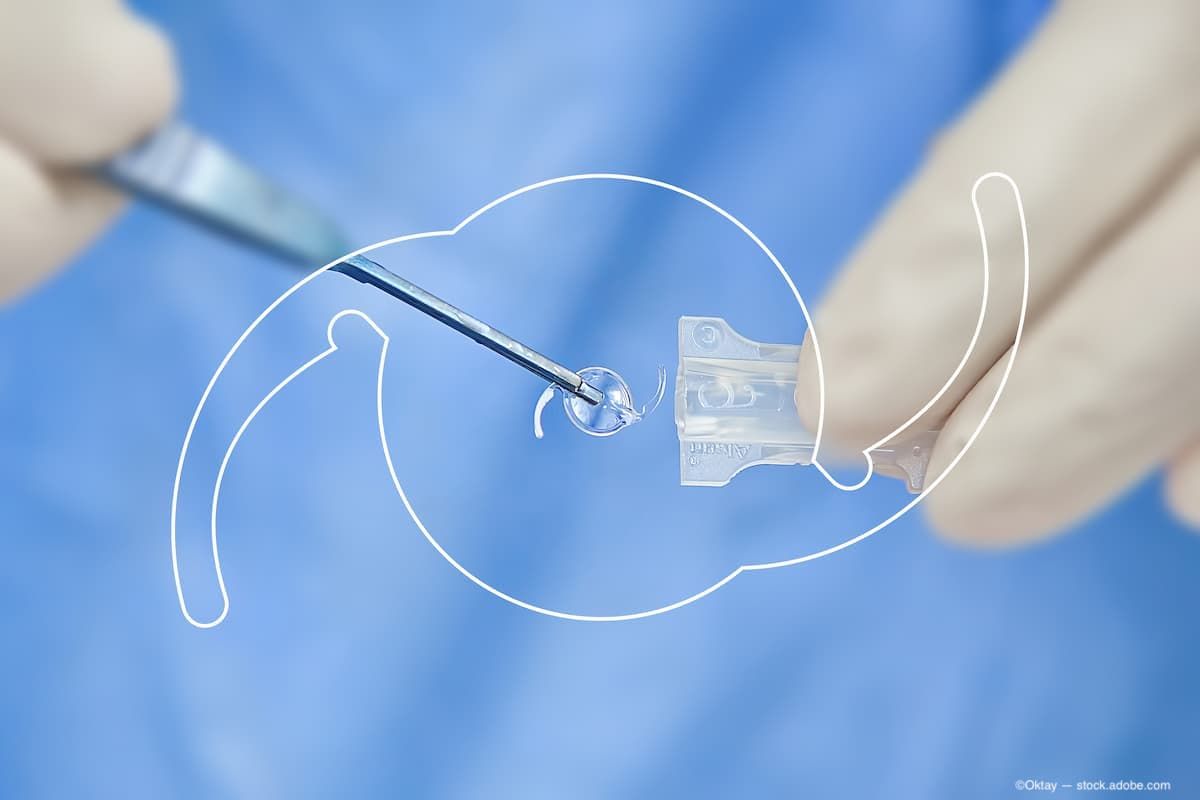Article
Where a toric EDOF lens fits in this surgeon's practice
Author(s):
I have long been an advocate of giving patients the best possible uncorrected distance vision with toric IOLs.
Recently, my results with a toric extended depth of focus (EDOF) lens have led to a dramatic increase in my presbyopia-correcting IOL rates, from about 7% of all my cataract procedures to nearly 25%. I've found that Symfony toric lenses (Johnson & Johnson Vision) provide reliable correction of astigmatism and the same acuity and quality of vision that we are accustomed to with the Tecnis toric, with the added benefit of improving near and intermediate vision.
That has made me much more comfortable talking to patients and referring optometrists about toric EDOF. I even chose this implant for my mother-in-law when she underwent cataract surgery.
Toric outcomes
I reviewed one-month results for 102 consecutive eyes of 72 patients implanted with Symfony toric IOLs. The cases were nearly evenly split between right and left eyes (52 OD/50 OS), with a majority of the patients (63%) being female.
All four of the available toric powers were implanted in this case series. The majority of eyes received the ZXT150 lens (62%); while 25% were implanted with a ZXT225, 9% with the ZXT300, and 4% with the ZXT375. Most eyes (55%) were targeted for emmetropia; 45% were targeted for slight myopia ranging from -0.25 to -1.00 D.
At one month postoperatively, mean uncorrected distance visual acuity was 0.11 ± 0.15 LogMAR (20/25.8 Snellen). More than three-quarters of the eyes were seeing 20/25 or better. The manifest spherical equivalent (MSRE) was -0.25 ± 0.47 D, with nearly eight in 10 patients enjoying an MRSE within 0.50 D of emmetropia. Patients were quite satisfied with their near vision after surgery: 72% of eyes implanted with the Symfony toric were J2 or better and 93% were J3 or better.
Residual cylinder was very low, at 0.30 ± 0.33 D. In all, 88% of eyes had ≤ 0.50 D of residual cylinder and 63% had ≤ 0.25 D.
Less than 2% of eyes (2/102) required a lens rotation postoperatively. Both of these eyes were high WTR astigmatic eyes implanted with high toric power IOLs. We know that any rotation in a higher astigmat can have a greater impact on vision so repositioning is more common in these cases. One of these patients also had a long, 27-mm axial length eye, along with her 3.50 D of with-the-rule (WTR) astigmatism.
I am now more likely to place a suture or use ReSure sealant (Ocular Therapeutix) in larger eyes like this to prevent any egress of aqueous that can lead to an imbalance in pressure in the anterior chamber and potentially contribute to lens rotation.
Contributing factors
Many factors go into success with any toric IOL, including the Symfony toric. Particularly during one's early experience with the lens, it is important to choose candidates with regular, stable astigmatism, average axial length (22-25.5), and a healthy cornea and retina. Initially, I would recommend avoiding patients with very low (<1.0 D) or very high (>3.0 D) astigmatism and anyone with poor zonular or capsular support.
Many people are concerned about the impact of toric IOL rotation on outcomes in astigmatic patients. However, postoperative rotation is only one potential cause of residual refractive error after toric IOL implantation-and, I would argue, the least likely, especially in normal eyes. Errors in preoperative measurement of the axis and magnitude of astigmatism are far more likely to be responsible for a suboptimal outcome.
In selecting the cylinder power and axis I like to ensure that at least two preoperative keratometry measures are in agreement. I always compare measurements from the Lenstar (Haag Streit), Cassini (i-Optics), and a Placido topographer-either the OPD Scan (Nidek) or the Atlas (Carl Zeiss Meditec).
In post-refractive eyes, I also obtain Orbscan topography (Bausch + Lomb). The Cassini device is helpful in understanding posterior corneal curvature. We know that anterior corneal topography measurements tend to slightly underestimate total corneal astigmatism in eyes with against-the-rule (ATR) cylinder, and that those with ATR are more sensitive to small amounts of residual error, so it is important to be more aggressive in correcting all the astigmatism in ATR eyes.
Appropriate power calculation is also important. For average eyes, I'm very comfortable with my Holladay 1 calculations, but I always do Barrett Universal and the newest version of the Hill-RBF calculator, as well.
Patients with dry eye (or any other corneal pathology) are likely to have more keratometric variability, so it is also very important to evaluate and treat the ocular surface before surgery. This should include evaluation of the lid margin and diagnostic meibomian gland expression, because the majority of cataract patients present with some degree of meibomian gland dysfunction, and often are asymptomatic. Ideally, the ocular surface management would begin with the referring primary care doctor.
Good marking technique (whether with a radial marker and ink, a femtosecond laser, or other method) is important to positioning the IOL on the correct axis intraoperatively. Surgeons need to make a consistent entry wound to avoid surgically induced astigmatism and achieve a round capsulorrhexis that overlaps the lens optic evenly.
When all of these factors are handled with care, it is possible to achieve excellent toric outcomes and, with new toric EDOF lenses, to offer patients better uncorrected near and intermediate vision at the same time.
Newsletter
Don’t miss out—get Ophthalmology Times updates on the latest clinical advancements and expert interviews, straight to your inbox.





